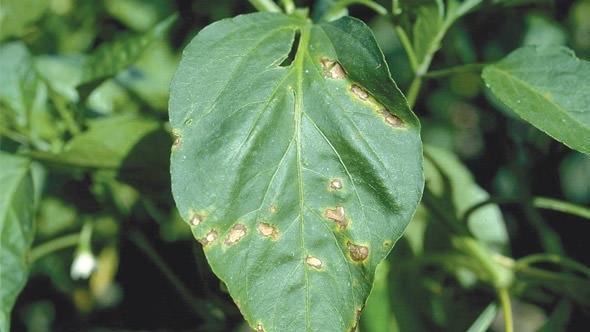How to Assess and Manage Wildlife Intrusion Risk on Your Farm

Oh, deer! Wildlife of all shapes and sizes add another level of crop protection and food safety measures for farmers.
To protect the public from foodborne illness, vegetable growers must identify and manage against possible environmental sources of contamination — such as intrusion and defecation by wild animals — to ensure public health concerns remain minimal.
Michele T. Jay-Russell, Ph.D., is the current Program Manager at Western Center for Food Safety, University of California-Davis, and a registered Doctor of Veterinary Medicine (DVM).
Jay-Russell helps growers develop wildlife intrusion preplant risk assessments. The goal is to detect and take preventative measures against potentially catastrophic events like large outbreaks.
You can find five-step assessment forms online with a simple Google search. But Jay-Russell shares some general areas of concern growers should keep in mind:
- History of the land and adjacent lands. To come up with a proper strategy, you need the spatial context of the fields and surrounding areas. “For example,” she notes, “the farm implicated in the 2006 E. coli O157:H7 outbreak traced to Paicines, CA, had a history of feral swine intrusions and damage to row crops, as well as nearby wine grapes.”
- Timing of harvest. Knowing harvest dates and whether they correspond to periods of increased wildlife activity can be helpful, Jay-Russell says. “The 2008 Campylobacteriosis outbreak linked to raw shelled peas sold locally in Alaska was associated with wild crane fecal contamination,” she says. More than 10,000 cranes roosted at a wildlife refuge near a pea field. The cranes visited the pea fields frequently, she says.
- No Two Years Are the Same. Just like farming itself, there is no annual blanket approach for assessing wildlife intrusion risk. “Each farm and even field will be different and may change across seasons and years,” Jay-Russell says. You can consult wildlife specialists to assess which species are potential problems. Several agencies have experts, including USDA Wildlife Services, state wildlife agencies, and university Extension.
Managing Wildlife Risk
It’s important to keep in mind, wildlife presence on any farm is virtually “inevitable,” Jay-Russell says. Even some indoor operations like greenhouses and aquaponics operations face similar risks.
And, as any seasoned farm manager surely knows, training can make a world of difference. That applies to field workers, managers, and supervisors see fields regularly.
“They are the eyeballs on the crops, soil, and ag water,” she says.
Heighten diligence close to and during harvest, she advises. Fecal-borne pathogens generally die off to low levels over time, so the most critical period is close to harvest.
Understanding the basic principles of risk assessment and management can be helpful as well, according to Jay-Russell.
“A single dried bird dropping would be very low risk vs. a large flock of nuisance birds, such as starlings or seagulls entering a field to forage, perch, or get water,” she says.
Wildlife intrusion is probably not an area of topical expertise for most growers. So Jay-Russell stresses leaning on local Extension and wildlife management experts as a resource whenever possible. Especially if there is a persistent problem with a specific species and location.
“In my opinion, transmission of a human pathogen (such as Shiga toxin-producing E. coli, Salmonella, Campylobacter) to fresh produce that ultimately causes human illness could be called a low probably/high consequence event,” she says.
So it’s critical to adopt a risk reduction-based approach.
Jay-Russell advocates a postharvest treatment whenever the level of risk is high enough to justify it. Minimally processed, immediately shipped produce like leafy greens definitely qualify.
“A ‘kill step’ at postharvest can greatly reduce the risk from small contamination events coming out of the fields,” she says.
Beneficial Insects
The deployment of beneficial insects as a preventative is an emerging concept that Jay-Russell says, “sounds intriguing.”
“At the International Association of Food Protection (IAFP) Conference last month, I was in a session with Matt Jones who recently published on dung beetles and foodborne pathogen reduction in produce fields,” she recalls. “Part of his research looked at the most effective species of dung beetle in this context. I think his take-home message was to encourage diversity to help maintain a healthy, natural population of beneficial insects. Hopefully more research on this topic will be funded in the future.”










